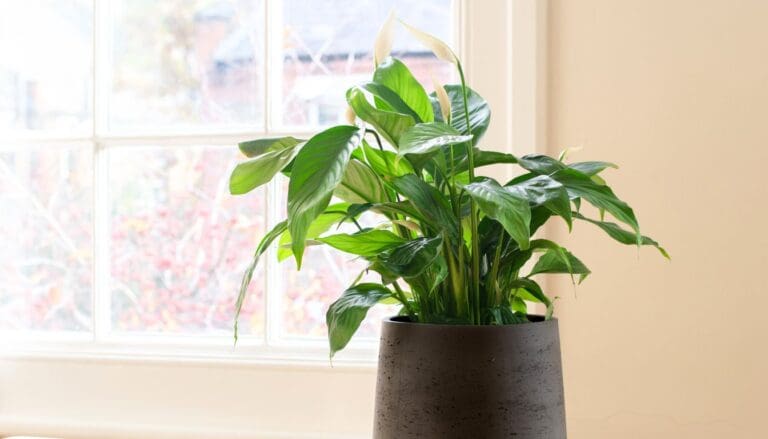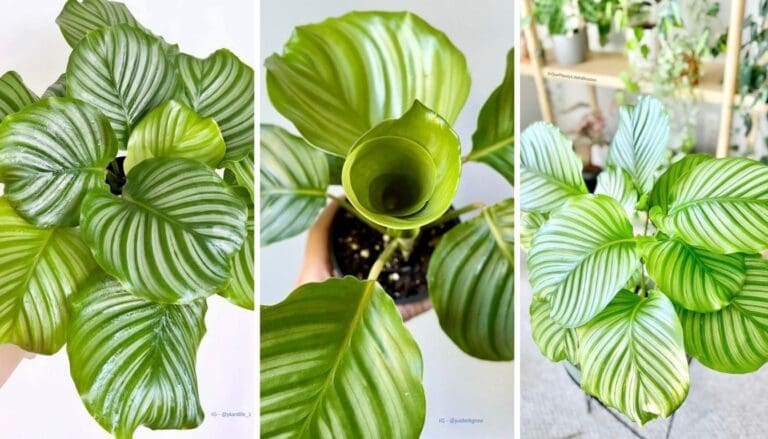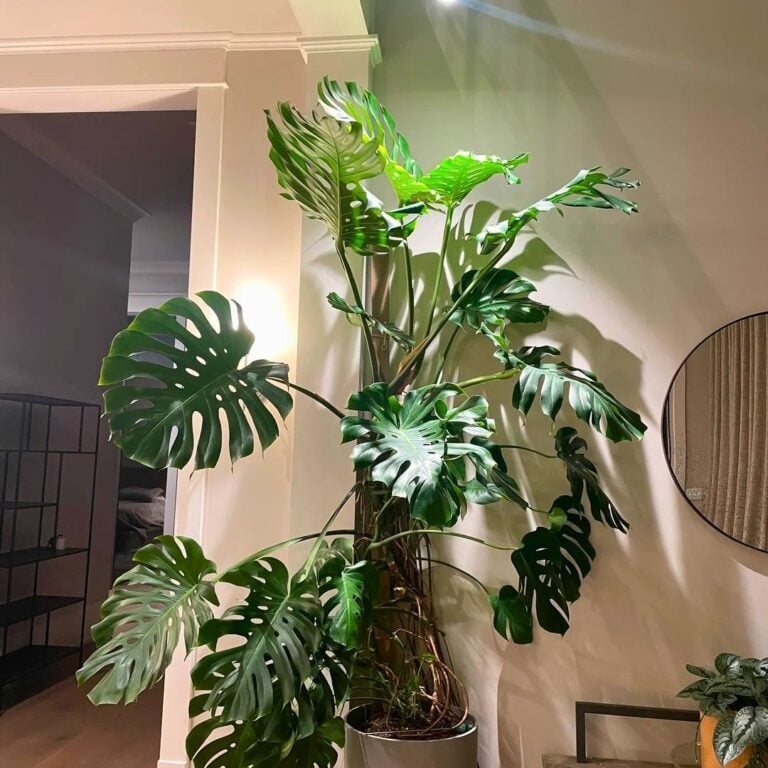5 Natural DIY Bug Spray for Your Houseplants: Keep Pests Away Naturally
Ever noticed those tiny, pesky bugs hanging out on your houseplants and wished there was a simple way to get rid of them? You’re in luck! 🪴
I’ve discovered some amazing natural DIY bug sprays that are easy to make and effective. Plus, they’re safe for your plants and pets. Who wouldn’t love that?
One of my favorite recipes includes neem oil mixed with a bit of dish soap and water. It’s great at keeping those annoying pests at bay while being gentle on your houseplants.
Simply spray it on, and watch the magic happen!
Don’t worry if you don’t have neem oil. You can also whip up a quick bug spray using peppermint soap and water. Not only does it work wonders, but it also leaves your home smelling fresh! 🌿
Ready to try these out? Share your thoughts and let me know how these tips work for you in the comments!
Please note: Simplify Plants is reader-supported. As an Amazon Associate, I earn from qualifying purchases made by our readers with no extra cost added to you all! Some links in the post are affiliate links and I get a commission from purchases made through links in the post.
Understanding Houseplant Pests
When dealing with houseplant pests, it’s important to know what you’re up against.
Identifying common pests, understanding their lifecycles, and knowing why natural solutions work are key to keeping your plants healthy and happy. 🌱
Identifying Common Pests
Houseplants can attract a variety of pests, each with unique traits. Some of the most common ones include:
- Aphids: Tiny, green or black insects that cluster on the underside of leaves. They suck the sap, causing leaves to curl and yellow.
- Spider Mites: So small they’re hard to see without a magnifying glass. Look for fine webs on leaves, which indicate their presence.
- Mealybugs: White, cotton-like masses on stems and leaves. They can stunt plant growth.
- Scale: Brown or black bumps on leaves and stems. They’re protected by a hard shell, making them tricky to get rid of.
Recognizing these pests early can help you tackle them before they become a major problem. 🕵️♀️
Lifecycle of Houseplant Pests
Understanding the lifecycle of these pests is crucial for effective control.
Most pests like aphids and spider mites have very short lifecycles, allowing them to reproduce rapidly. 🌀
- Aphids: They can give birth to live young, enabling infestations to grow quickly. They reproduce asexually in most situations.
- Spider Mites: Eggs hatch in as little as three days, and they become adults in about a week, leading to fast population growth.
- Mealybugs: Soft-bodied pests that lay hundreds of eggs which hatch in about 10 days.
- Scale: These pests can live up to a year and reproduce by laying eggs under their protective shells.
Knowing these details helps you to strategically time treatments to break their lifecycle and prevent re-infestation.
Why Natural Solutions?
Using natural solutions for pest control is beneficial for several reasons.
First, chemical pesticides can harm not just pests, but also bees and other beneficial insects. Plus, they can be toxic to pets and humans. 🐾
Natural solutions, like neem oil or peppermint spray, are often safer and can be just as effective.
- Neem Oil: Derived from the neem tree, it not only repels pests but also disrupts their hormones, stopping them from feeding and reproducing.
- Peppermint Spray: Smells great and keeps unwanted bugs at bay. 🌿
By opting for natural methods, you protect the environment and maintain a healthier home. Have you tried any natural pest solutions? Share your experiences or questions in the comments! Let’s help each other keep our plants happy and bug-free. 🌟
Preparation Basics
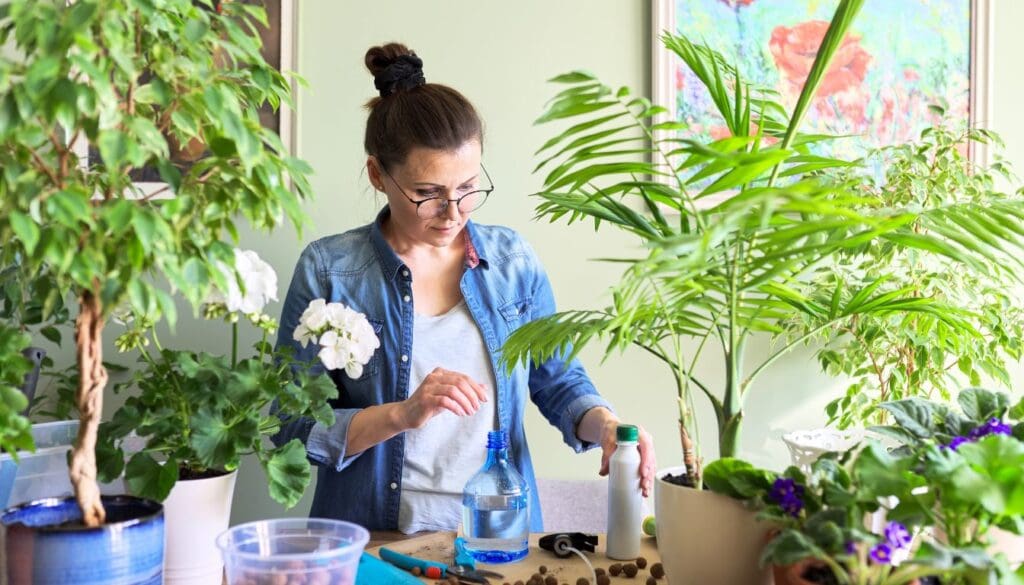
Getting ready to make a natural DIY bug spray for your houseplants is simple and fun. I’ll cover what you need to stay safe, the ingredients to gather, and the equipment to use.
Safety Tips
Before we start, safety first!
Make sure you’re working in a well-ventilated area. Some essential oils can be strong, so avoid inhaling them directly.
Wear gloves 📏 when handling ingredients like vinegar or oils; they can irritate sensitive skin.
Always label your spray bottles so you don’t accidentally spray them in your eyes!
And if you have pets, keep them out of the kitchen while you’re mixing.
Do you have any safety tips? Share them below! 📝
Gathering Ingredients
For our DIY bug spray, you’ll need a few key ingredients. Here’s what’s typically used:
- Peppermint essential oil (20-25 drops)
- Castile soap 🌿 (1/2 teaspoon, optional)
- White vinegar 🥤 (for specific recipes)
- Garlic (one clove, smashed and pureed)
- Cinnamon powder 🌰 (two teaspoons)
- Warm water
Depending on the recipe, you might use different combinations.
For example, vinegar and water can keep aphids away, while peppermint oil can repel a variety of pests.
Have you tried any of these? Let me know which ones work best for you!
Equipment Needed
Let’s talk tools.
First, you’ll need a good spray bottle. Make sure it’s clean and free of any previous chemicals. A basic plastic one works fine.
Have a measuring cup and teaspoon ready for precise mixing.
If you’re blending garlic, a small blender or food processor 🔀 can make the job easier.
It’s also handy to have a jar with a lid to store any leftover mixture.
Do you like using any special equipment? I’d love to hear about it! 💬
DIY Bug Spray Recipes
I’ve found some great DIY bug spray recipes that will help you keep those pesky bugs away from your houseplants. These sprays are simple to make and use common household ingredients. 🪴✨
Simple Oil-Based Spray

One of my favorite go-to solutions is oil-based spray. This spray helps to suffocate and repel harmful insects.
Here’s what you need:
- 1 cup water
- 1 tablespoon vegetable oil
- A few drops of dish soap
Mix these ingredients in a spray bottle and shake well before using.
Spray directly on the affected areas of your plants.
It’s important to shake the bottle each time before using, so the oil mixes well with the water.
Have you tried oil-based sprays before? Share your tips below! 🌿
Soap-Based Spray Recipe
I love using a soap-based spray because it’s effective and easy to make. It works by dehydrating and suffocating the bugs.
Ingredients:
- 1 quart of water
- 1 teaspoon of liquid dish soap
Combine the soap and water in a spray bottle and shake well.
Gently spray the mixture on the leaves and stems of your plants.
Be sure to cover all areas, especially where bugs are visible.
Do you have a favorite brand of dish soap for your plant sprays? Let me know in the comments! 🧼🪴
Neem Oil Spray Solution
Neem oil is a fantastic natural insecticide. It’s safe for plants and pets, and it’s easy to use.
Here’s the recipe:
- 1 gallon of water
- 1-2 tablespoons of pure, cold-pressed neem oil
- 1-2 teaspoons of dish soap
Mix everything in a large spray bottle or container.
Spray the solution on your plants, ensuring you cover the leaves’ tops and undersides.
Neem oil also helps prevent root rot if used as a root soak.
Have you ever tried neem oil? Share your experience below! 🛢️🌱
Garlic and Chili Pepper Spray

If you’re looking for a potent bug spray, try the garlic and chili pepper spray. This recipe is particularly effective against soft-bodied insects like aphids.
Here’s what you need:
- 1 garlic bulb, crushed
- 2 cups of water
- 1 tablespoon of vegetable oil
- 1 teaspoon of mild soap
- 2 chili peppers, chopped
Blend the garlic, chili peppers, and water. Let it sit overnight.
Strain the mixture into a jar and add the oil and soap.
Then, dilute 1 cup of the mixture with 1 quart of water in a spray bottle.
Use it on infested plants.
Do you love spicy solutions as much as I do? 🌶️🧄
Herbal Water Infusion Sprays
Herbal infusions are another wonderful way to keep your plants bug-free. These sprays use essential oils known for their insect-repelling properties.
Ingredients:
- 20-25 drops of peppermint essential oil
- 2 cups of warm water
- 1/2 teaspoon of Castile soap (optional)
Mix all the ingredients in a spray bottle and shake well.
This spray is not only effective but also smells amazing!
You can also try other essential oils like lavender or eucalyptus.
Have you used essential oils as bug sprays before? Tell me which one is your favorite! 🌼✨
Application Guidelines
Applying bug spray to houseplants effectively involves knowing the right times, methods, and frequency to do it. I’m here to help you get the best results. 🌱
When to Apply
Timing is crucial.
Early morning or late evening are the best times to apply since plants are less likely to be stressed by the heat.
Applying during these times ensures the plant absorbs the spray more effectively without risking leaf burn.
Always check your plant for bugs regularly.
Spot-treat areas where you see pests first.
Got a special plant in bloom or one that’s young? Be extra careful and maybe do a patch test before applying all over.
It’s always better to be safe than sorry, right?
How to Apply

Spraying is an art! 😄
Shake the mixture well (if you’re using homemade sprays) to make sure all ingredients are blended.
Hold the spray bottle about 6-12 inches away from the plant.
This distance helps you cover the plant evenly without drenching it.
Target both sides of the leaves. Many bugs like to hang out under leaves, so don’t miss those spots.
Make sure the spray reaches the stem and soil too.
Wearing gloves can be a good idea, especially if you’re handling strong-smelling or potent solutions like garlic or neem oil mixtures.
Frequency of Application
Consistency is key. For mild infestations, applying the spray once a week usually works well.
Not seeing results? You might need to step it up and spray twice a week for more serious problems.
Don’t stop too soon! Even if the pests seem to be gone, keep up the routine for at least a couple more weeks. This ensures any missed tiny bugs don’t come back to surprise you.
Also, remember to rotate your sprays to make sure pests don’t get used to one kind.
Got any tips or favorite recipes? Share them with me! 🌿✨
Monitoring and Maintenance
Keeping an eye on your houseplants’ health is crucial to ensure your DIY bug spray works effectively.
Regular check-ups and adjusting your approach will help you tackle any pest problems head-on. 🌱 🐛
Assessing Plant Health
The first step is assessing plant health. I look at my plants closely, examining the leaves, stems, and soil.
Healthy plants should have vibrant, green leaves and strong stems.
Spotting yellow leaves, wilting, or unusual spots? These are signs your plant might need some extra care.
Sometimes, it’s not just pests but also the humidity, light, or watering routine.
It’s helpful to take notes. I keep a small garden journal where I track changes.
Some pests are tiny and might hide on the undersides of leaves. Don’t forget to check there!
Also, does your plant smell funny? This could indicate root rot or other issues.
Regular Check-Ups

Regular check-ups are essential. I set a reminder on my phone to inspect my plants weekly.
It’s a great routine that helps me catch any problems early.
Noticing pests or damage? Use your DIY bug spray immediately. The earlier you treat it, the better!
During these check-ups, I also look for new growth. 🌿
New leaves or flowers mean a happy plant! It’s also a great time to trim any dead or dying parts. This helps the plant focus its energy on healthy growth. Plus, it just looks prettier!
Adjusting Your Approach
Sometimes, despite our best efforts, pests persist. Adjusting your approach can make a big difference.
I start by tweaking my bug spray recipe. Maybe you need more neem oil or a bit of dish soap to help it stick better.
Is the infestation severe? You may need to apply your spray more frequently. Instead of once a week, try twice.
Also, consider isolation. Got a highly infested plant? Move it away from the others to prevent the pests from spreading.
Don’t forget to share your experiences! What has worked best for you? 👇 Let’s help each other keep our plant buddies healthy and happy! 🌿✨
Additional Tips and Tricks
Whether you’re trying to keep bugs away from your houseplants or dealing with an infestation, there are several natural methods that can help.
Let’s explore some simple, effective strategies you can use to maintain healthy, bug-free plants.
Companion Planting
Have you ever thought about using other plants to help keep bugs away? Companion planting can be a smart move.
Certain plants, like marigolds and basil, are known to repel pests naturally.
If you place these plants near your houseplants, bugs might be less likely to invade.
For example, basil can repel flies and mosquitoes, while lavender can keep moths and other insects at bay.
It’s easy and can add some variety to your indoor garden. 🌱 Plus, you get the bonus of fresh herbs! What’s not to love about that?
Preventative Measures
Prevention is always better than cure, right? Here are a few things you can do to stop those bugs before they become a problem.
First, keep your plants clean. Regularly wipe the leaves with a damp cloth to remove dust and potential pests.
And remember, overwatering can attract pests like fungus gnats, so make sure to water your plants only when necessary.
Next, use natural barriers such as diatomaceous earth around the base of your plants to deter bugs.
It’s a fine powder made from fossilized algae, safe for your plants but deadly for insects.
Do you have any go-to tips for preventing plant pests? I’d love to hear them!
Dealing with an Infestation
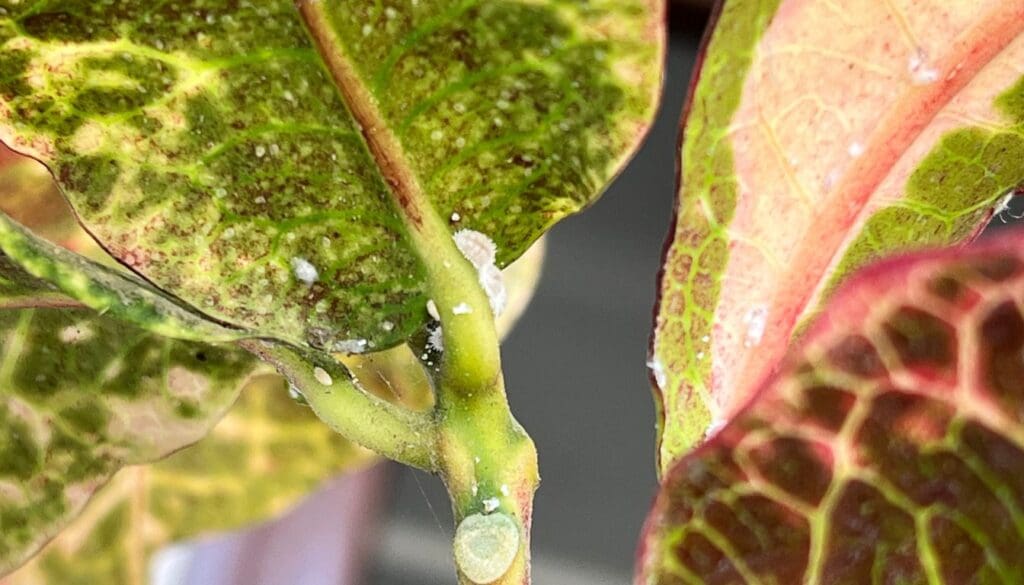
Sometimes, despite our best efforts, an infestation happens. But don’t worry, there are natural ways to tackle it.
If you see bugs, the first step is to isolate the infested plant to prevent spreading.
Create a simple bug spray with ingredients like peppermint, garlic, or neem oil.
For instance, mix one teaspoon of mild liquid soap with neem oil and water. Spray this on your plants, and watch those bugs disappear! 🐛
Another effective method is to introduce beneficial insects like ladybugs, which prey on pests such as aphids.
It’s like bringing nature’s pest control right into your home.
It can be frustrating to deal with pests, but these tips can help you get your plants back to their healthy, happy selves. Have you tried any of these methods? Share your experience! 🌿🎋
FAQs
How often should I apply DIY bug spray?
I usually spray my houseplants once a week. 🌱 If I notice an infestation, I increase it to twice a week until it’s under control.
Are these sprays safe for pets?
Most homemade bug sprays are safe for pets, but always double-check the ingredients.
Neem oil and mild soap are typically safe. 🐾 If you’re worried, test a small area first.
Can I store my homemade spray?
Yes, you can store most sprays for up to two weeks. Just make sure to label the bottle and keep it in a cool place. If it starts smelling weird, toss it and make a new batch.
What if my plants react badly?
Sometimes, plants can be sensitive. Test your spray on a small leaf first.
If it looks happy after 24 hours, go ahead and spray the whole plant. If not, dilute the spray with more water.
Can I mix different sprays?
It’s best to stick to one recipe to avoid any reactions. Mixing too many ingredients can be too harsh on your plants.
What ingredients should I avoid?
Avoid any harsh chemicals or ingredients you’re not familiar with. Stick with safe, common ingredients like neem oil, mild soap, and essential oils.
Let’s chat!
Do you have any unique bug spray recipes? Share them in the comments! I love hearing new tips and tricks. 😊
Got more questions? Drop them below!👇
Conclusion
Making your own natural bug spray for houseplants is super easy and inexpensive. 🪴
Plus, it’s a fun way to know exactly what’s going on your plants.
I love using neem oil and peppermint spray. They not only keep the bugs away but also make my home smell good. 🌿
Have you tried making your own bug spray before? Please share your experiences in the comments below! ⬇️
I’d love to hear what works best for you.
Don’t forget to save and share this with friends who need some plant care tips! 🌱✨
Happy gardening!
Note: Some images in the articles are sourced from Reddit and Other Platforms For Reference Purpose.



